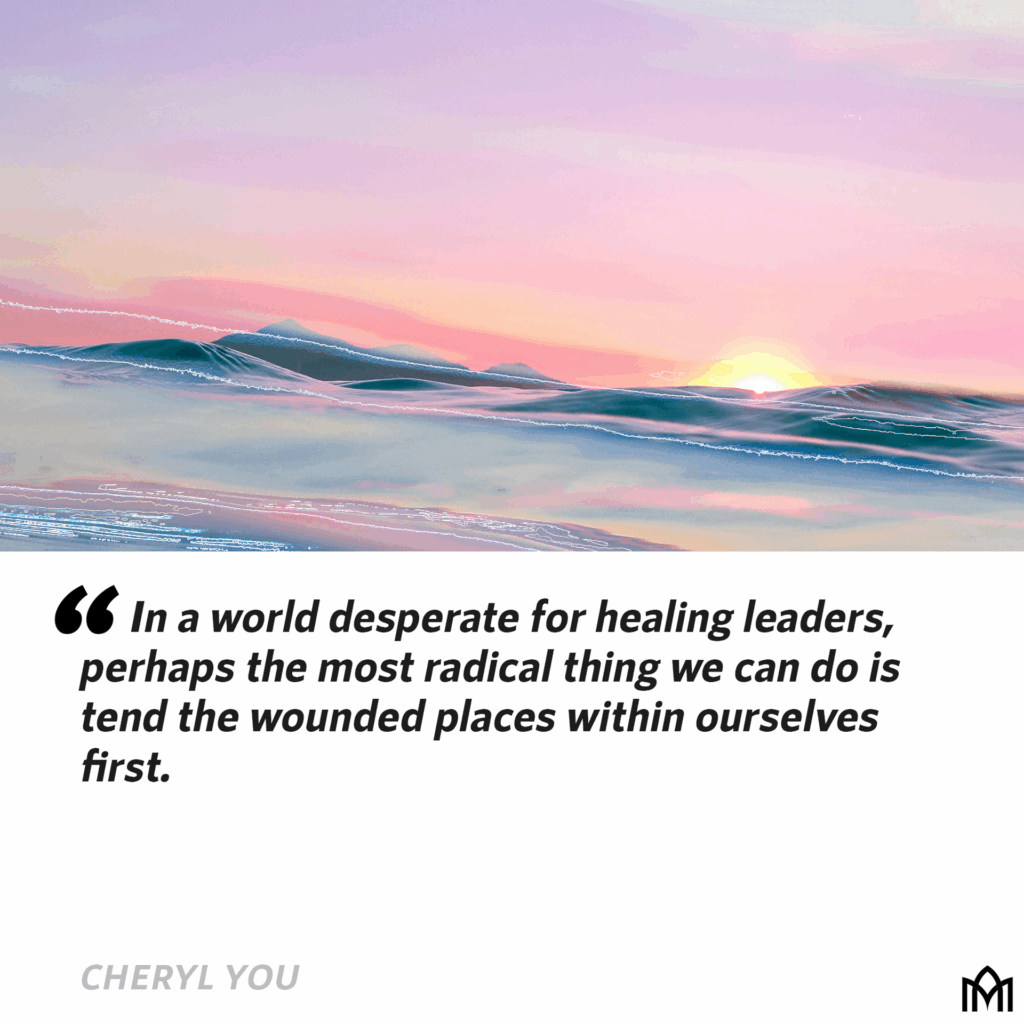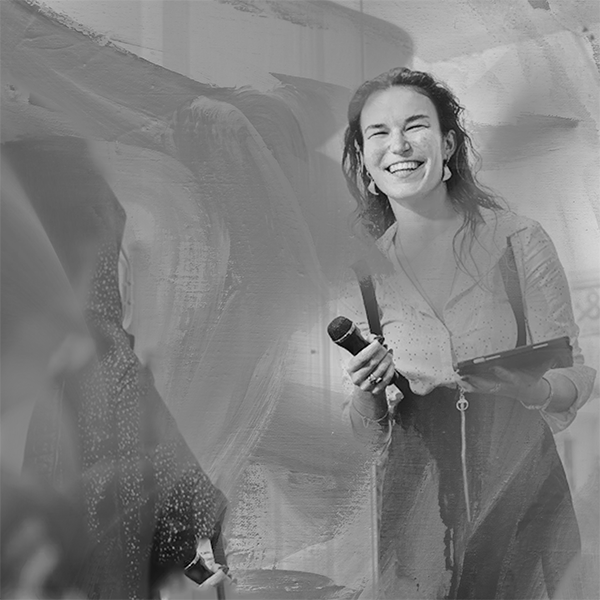The Healing Leader: Tending Our Wounds to Serve Others
“I have trauma?” The words escaped as barely a whisper. I had just begun learning about trauma to better minister to hurting people, but the Spirit guided me down an unexpected path—into my own story and the wounded places I had long buried. What I discovered changed everything: My capacity to offer healing presence was intertwined with my willingness to face the ways my past was still quietly shaping my present. Jennifer Baldwin captures this well: “When we are able to provide grounding compassionate care for the wounding within our own lives… we generate a space that is more capable of holding survivors of traumatic experience/s with congruence, grace, and care.“1Jennifer Baldwin, Trauma-Sensitive Theology: Thinking Theologically in the Era of Trauma, 56.
Perhaps “trauma” is not your word of choice when you think about your life. “My childhood wasn’t that bad, I grew up in a normal family,” you might think. I understand that resistance. In reality, all leaders carry wounds2Trauma comes from the Greek word for “wound.” In this piece, I primarily use the lens of wounding to talk about trauma and use the words interchangeably. from our past that continue to live in our brains and bodies, covertly influencing our life in the present. We’ve become experts at minimizing our stories and bypassing our wounds, comparing our experiences to others who’ve “had it worse,” convinced we don’t deserve to feel the pain that we work so hard to avoid. We tell ourselves that we didn’t have it that bad, that our wounds aren’t that serious, and that because the injury happened so long ago we should have gotten over it by now.
All of us carry wounds from our childhood to some degree. We didn’t outgrow the survival mechanisms that once protected us, instead they’ve now become our default ways of moving through the world. We carry them into our leadership, where they appear uninvited during moments of crisis and stress.
We are designed to enjoy connection with others, but when we unconsciously sense we are under threat, we switch into protection mode. We act out of those automatic, unconscious defensive patterns, our nervous system working to protect us from pain it remembers from the past.
When protection mode kicks in, connection goes offline and we lose access to our higher executive functioning—the parts of our brains which enable us to be emotionally regulated, flexible, adaptive, energized, coherent, and stable.3From neurobiologist Dan Siegel’s “River of Integration,” The Developing Mind: How Relationships and the Brain Interact to Shape Who We Are, 16. In this defensive state, our sense of agency, authenticity, and relational availability are diminished. Our perception of reality becomes “off” and gets replaced by scripts formed from the stories our bodies have held, and we lose our ability to be spontaneous and flexible, governed instead by automaticity and reactivity. We may shut down and isolate ourselves; all of this happening beyond our conscious awareness.
In the face of real threat, we are meant to switch momentarily into protection mode. But when our wounds go unhealed and our trauma goes unprocessed, our nervous system might be working day and night to keep us safe even when it doesn’t need to. When we lead from unhealed wounds, the cost is higher than we realize—we harm both ourselves and those we serve.
All leaders carry wounds from our past that continue to live in our brains and bodies, covertly influencing our life in the present. Share on X
Our Most Important Work
We are living through an unprecedented revelation of harm caused by leaders and Christian institutions. This is a critical juncture in the history of the church. We need to fundamentally reimagine what leadership looks like. As leadership expert, Dr. Doris Gomez writes, “After it is all said and done, after all the leadership theory and tools have been studied, leaders ultimately lead according to who they are. Leadership is deeply personal. If leaders are unwell, their followers will suffer.”4Doris Gomez, The Heart of a Leader: Connecting Leading and the Inner Life. Accessed via https://www.regent.edu/acad/global/publications/innerresources/vol1iss1/gomez_innerlife.pdf.
In Ezekiel 34:2-6, the Lord issues a scathing rebuke to the leaders of the land:
“Woe to you shepherds of Israel who only take care of yourselves! Should not shepherds take care of the flock? You eat the curds, clothe yourselves with the wool and slaughter the choice animals, but you do not take care of the flock. You have not strengthened the weak or healed the sick or bound up the injured. You have not brought back the strays or searched for the lost. You have ruled them harshly and brutally. So they were scattered because there was no shepherd, and when they were scattered they became food for all the wild animals”(Ezekiel 34:2-6, NIV).
With utter clarity, God outlines his expectations for the leaders of the land: they are to care for the people by strengthening the weak, healing the sick, binding up the injured, and seeking out the lost. Instead, they exploited the people, ruled over them harshly, and left them to wander out in the wild. This is a stark picture of the ways unhealthy leadership can cause harm among the people of God. In today’s context of leadership, our unprocessed trauma can manifest in a variety of ways: it can look like ego-driven or fear-based decision-making, reactivity, people-pleasing, micromanaging, over-functioning and constant burnout, perfectionism, and creating cultures of performance over authenticity. Because of the power dynamics inherent in leadership, when we lead from our unhealed wounds, we have the potential to harm those God has entrusted to our care.
We need leaders who will heal rather than harm. But we can only heal when we first attend to our own healing. As Parker Palmer has said, we need new leadership that has the “courage to take an inner journey toward both our shadows and our light–a journey, that, faithfully pursued, will take us beyond ourselves to become healers in a wounded world.”
Because we lead from who we are, we cannot separate the external work that we do from the internal work of attending to what’s within. Who we are is what we offer to the world. We can numb our pain only for so long. Taking the inner journey, participating in the vital work of healing our wounds: this is our most important work as leaders. This journey is by no means easy–it takes great courage to face the pain of our past but as James Baldwin once wrote, “Not everything that is faced can be changed, but nothing can be changed until it is faced.”
We need leaders who will heal rather than harm. But we can only heal when we first attend to our own healing. Taking the inner journey, participating in the healing of our own wounds: this is our most important work as leaders. Share on X
What Does Healing Mean?
The good news is that Jesus wants to heal us. When we heal, we are more fully ourselves in God. Chuck DeGroat describes healing as “coming home to yourself”–a place of freedom, wholeness, and groundedness.5Chuck DeGroat, Healing What’s Within: Coming Home to Yourself–and to God–When You’re Wounded, Weary & Wandering It isn’t about fixing what’s wrong with us or erasing our triggers but reclaiming the parts of ourselves diminished by trauma, disappointment, or injustice.6Dan Allender, “Why Does My Healing Matter” on the Allender Center podcast. Accessed via https://theallendercenter.org/2025/01/why-does-my-healing-matter. We stop minimizing our wounds and allow them to be seen and dressed by our kind Shepherd. True healing grows our capacity to notice our automatic responses and choose how we respond. Even in times of stress, we remain connected to our body and emotions, feeling deeper safety with ourselves and with others. We recover the most loving, resilient, joyful, and generous version of ourselves. It’s an ongoing process of integration, awareness, and growing capacity to be present with both joy and pain–in ourselves and in others.
In over two decades of leadership in the church, I’ve tried everything: cultivating spiritual practices, a rule of life, introspection, prayer, and relentless character development–all good things. But one day, I found myself so stuck and none of my carefully curated practices worked to quell the growing hurricane of exhaustion, anger, and grief within that was spilling out on those around me. I needed to heal and I couldn’t do it alone. Ever so gently, the Spirit led me down the forgotten paths of my story, and with skilled guides like my spiritual director and therapist, I gradually found my way to freedom and wholeness–a place of belovedness.
Because of the power dynamics inherent in leadership, when we lead from our unhealed wounds, we have the potential to harm those God has entrusted to our care. Share on X
The Path Forward
Healing our wounds is slow work. There’s no formula or quick fix. We want God to snap his fingers and instantly heal us, but God wants us to partner with him in the work of healing. It is hard, messy, and nonlinear. Did I mention, slow? Slow is antithetical to our full and busy lives as leaders but slow is enduring—meaningful change requires time and intentionality and we may even need the help of a trained therapist, one who understands how trauma impacts the brain and body. But here’s three crucial ways we can begin the journey:
- Practice Kind Attention: Healing begins when we compassionately attune to what’s happening within us.
Develop rhythms of reflection to notice what’s stirring within you with honesty and curiosity. Chuck DeGroat suggests imagining an internal dashboard with warning lights for thoughts, emotions, bodily sensations, relational energy, and behaviors. Take time to regularly slow down and notice: where are your yellow lights (worth paying attention) or red lights (immediate attention needed)?7Chuck DeGroat, Healing What’s Within, 54ff. As leaders, we often carry more than we realize. Give yourself permission to acknowledge what you are carrying and communicate what you need. If you are consistently in an elevated or numb state, experiencing physical symptoms, or finding that self-reflection increases your distress, it might be time to seek professional help.
- Befriend Your Pain: Healing begins when we can tell a truer story about our pain.
What if those unwanted behaviors, emotions, or sensations are not to be suppressed but to be approached with curiosity? What if, instead of turning away, you turned toward that part of yourself and asked, “What’s your story? What are you trying to protect me from?” Partner with God who, rather than being a demanding father who is waiting to punish us when we mess up, is a kind Shepherd who seeks out all the wounded parts of us, bringing them into his care to tend, heal, and integrate them. We do this by noticing how they show up in our body, refraining from assigning positive or negative value to unpleasant emotions or sensations, and inviting Jesus to meet us where we are.
- Seek Safe Spaces for Vulnerability: Healing begins when we allow ourselves to be truly known.
This might be the hardest part. For many of us who’ve lived behind protective shields, being truly known feels terrifying. But we cannot heal in isolation—we were created for connection. As psychiatrist Dr. Curt Thompson tells us, “Healing comes not just from being heard but from being known deeply and loved anyway.” It’s time to bust the myth of leadership as a lonely endeavor. Find safe people committed to confidentiality who can hold your story without trying to fix you–this could be a therapist, spiritual director, confessional community,8See https://www.thecbk.org/ccs for more on confessional community. support group or trusted friends (preferably outside your ministry context). As leaders, we’re expected to project confidence and authority while we’re riddled with shame, insecurity, and anxiety on the inside. Perhaps it’s when leaders regularly confess their weakness and pastors become more human that the church can truly become a place of God’s working.9Mandy Smith, Confessions of an Amateur Saint.
The Hope
When we lead from our healing—having done the hard, slow work of tending our wounds—we lead from abundance rather than scarcity. It’s time to leave behind the old leadership models of going at it alone while disintegrated and disconnected, white knuckling until we burn out, and using people to accomplish our mission. It’s time to lead from our most loving, connected, free, and generous selves because this has the potential to transform the spaces God has called us to. Our own healing becomes a gift to others. This is my conviction: that by facing our own wounds with courage and compassion, we can shift the trajectory of our churches and communities. In a world desperate for healing leaders, perhaps the most radical thing we can do is tend the wounded places within ourselves first.
Resources to Support Your Healing Journey:
- Healing What’s Within, Chuck DeGroat
- Make Sense of Your Story, Adam Young
- Healing Leadership Trauma, Nicholas Rowe & Sheila Wise Rowe
- Wounded Pastors, Carol Howard & James Fenimore
///
We want God to snap his fingers and instantly heal us, but God wants us to partner with him in the work of healing. It is hard, messy, and nonlinear. Did I mention, slow? Share on X




